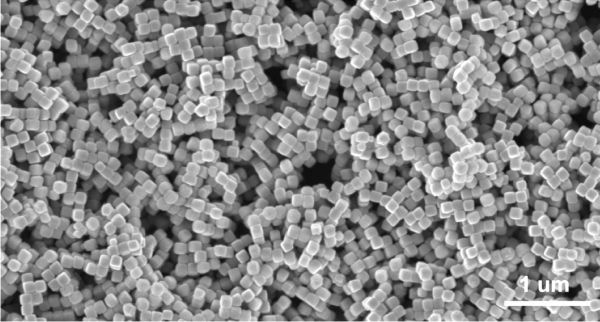Rice University engineers are turning carbon monoxide directly into acetic acid — the widely used chemical agent that gives vinegar its tang — with a continuous catalytic reactor that can use renewable electricity efficiently to turn out a highly purified product.
The electrochemical process by the labs of chemical and biomolecular engineers Haotian Wang and Thomas Senftle of Rice’s Brown School of Engineering resolves issues with previous attempts to reduce carbon monoxide (CO) into acetic acid. Those processes required additional steps to purify the product.
The environmentally friendly reactor uses nanoscale cubes of copper as the primary catalyst along with a unique solid-state electrolyte.
In 150 hours of continuous lab operation, the device produced a solution that was up to 2% acetic acid in water. The acid component was up to 98% pure, far better than that produced through earlier attempts to catalyze CO into liquid fuel.
Read more at: Rice University
An electron microscope images shows copper nanocubes used by Rice University engineers to catalyze the transformation of carbon monoxide into acetic acid. (Photo Credit: Wang Group/Senftle Group/Rice University)


